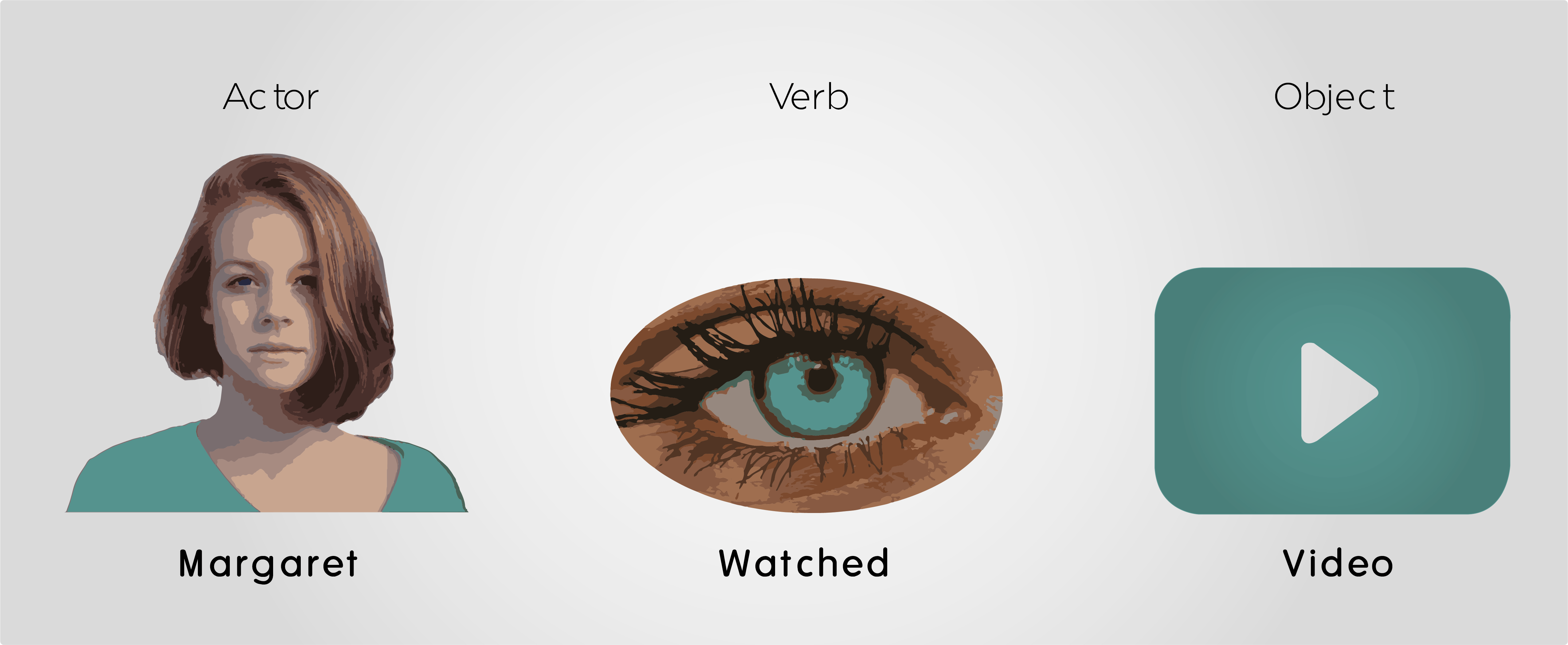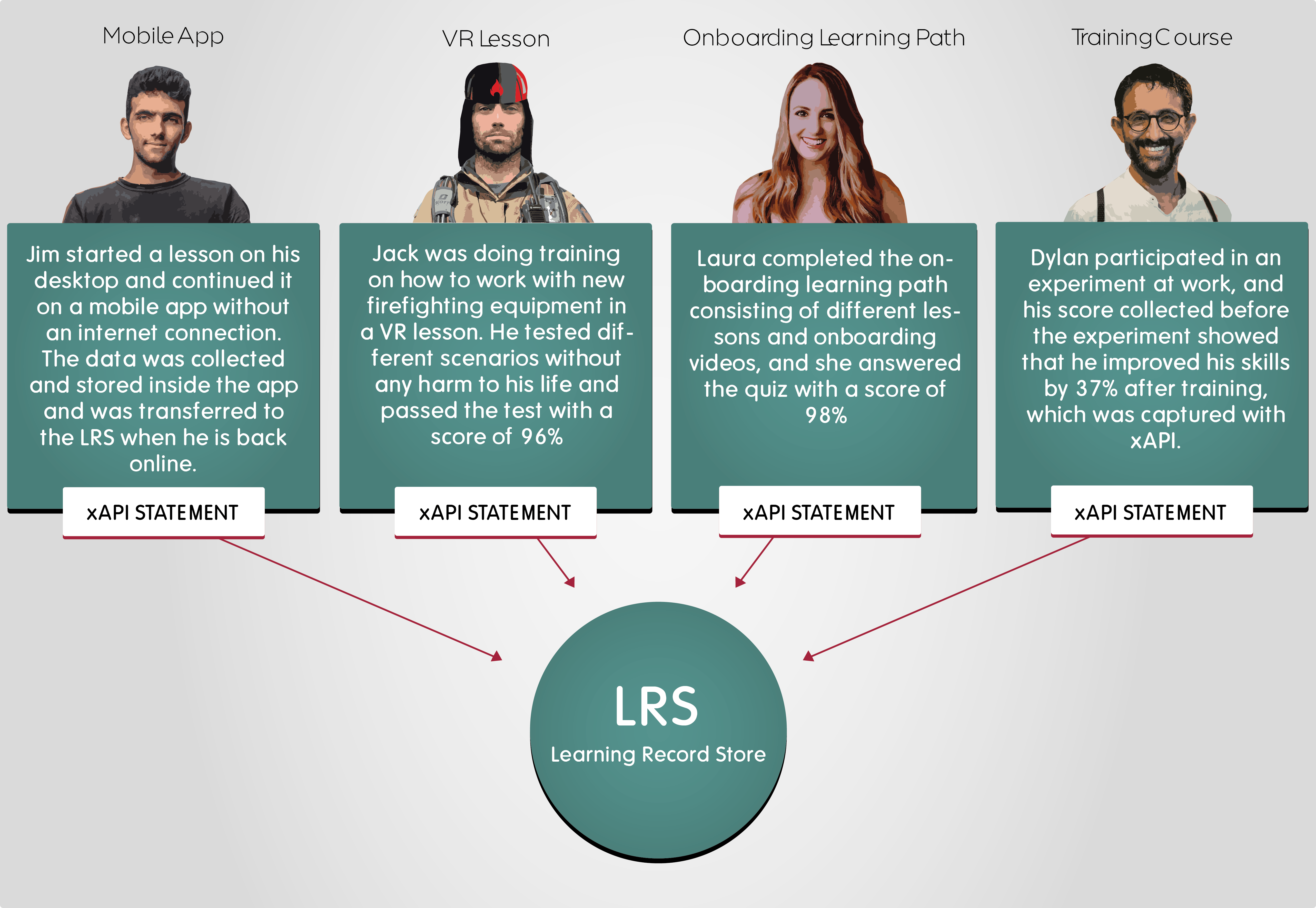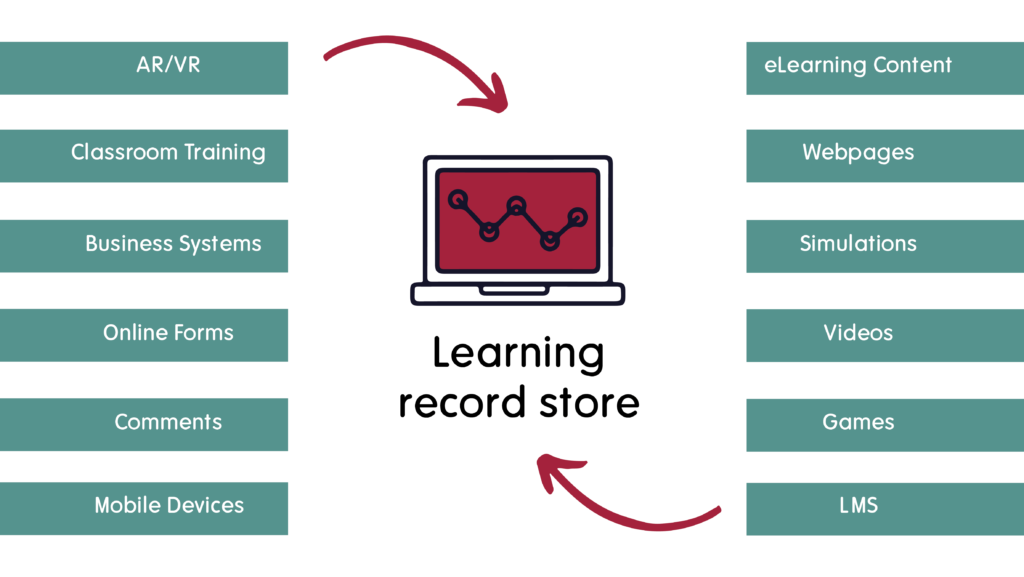A Learning Record Store, or LRS, is a system used in conjunction with the experience application programming interface (xAPI) to collect, store, and retrieve people’s learning experiences. A Learning Repository for all possible learning activities. xAPI is an eLearning specification that allows learning data to be collected from a wide range of sources. Sometimes this is described as the xAPI ecosystem.
xAPI is a specification drawn up by the organization behind SCORM, based on experience gained with both SCORM and AICC. SCORM is an existing standard for creating online learning packages. This allows data to be collected as completed, successful, and to provide a score. However, in practice this is very limited in terms of data collection. The desire is to be able to compare the results of training with the training effort or correlate with the results in practice. It is not only the results themselves that count, but possibly the learning process itself. Ultimately, one learns to be able to do something better is in practice. What has someone done to learn, and how does that translate into practice.

Figure 1. A learning experience statement
By storing the student’s experiences or statements (Statements) in a different and better way, namely as meaningful statements (xAPI Statements), the data can be presented in a way that makes it more accessible and easier to interpret. Statements are short grammatical phrases, in which result, context and time can also be recorded. This makes it easier to see what the result is of a specific learning intervention in practice. For example, when training the product knowledge of sales people, this should also have a positive effect on the sales figures.
xAPI data in a Learning Record Store can be easily compared to, for example, data from a CRM such Salesforce or an HRM system such as Peoplesoft. When there has been a safety training. Does this actually lead to fewer accidents in the workplace, viewed over a certain period of time?
An LRS is a separate system that is linked to a Learning Management System (LMS) if that LMS is set up for it. The ILIAS LMS, for example, has an interface to do this and can also report upon simple statements. There are already a number of LRS systems to choose from, including:
- Grassblade LRS
- Watershed LRS
- Yet Analytics
- Learning Locker (recommended in combination with ILIAS)
There are plenty of options available, including in Open Source or with additional features for a fee. The same goes for authoring tools. Most authoring tools now also support xAPI, in addition to SCORM. In addition, xAPI offers the ability to record, how much someone has viewed from a video, or how much someone has read from a manual, in addition to completing a course or achieving a certain score. It therefore provides richer data that can be used for broader and/or deeper analysis of the results. So, the LMS can filter for certain statements, but all statements end up in the LRS and can be analyzed afterwards or can be viewed in more detail with drilldowns through learning dashboards in the LRS
How does it work?
An LRS uses xAPI to collect learning data or experiences from both online and offline sources. These experiences are reported back to the LRS in the form of xAPI instructions, where they are stored. These statements can then be retrieved for reporting and interpreting the learning data. Typically, an LRS provides dashboards and reporting features built specifically for these purposes.
xAPI generates instructions in the following structure: [actor/noun] [verb] [object]. Using this structure, the way learning activities are reported is standardized. This makes it easier to interpret data from many different sources. Like a mobile app, a virtual reality video, an onboarding event or a traditional course.

Figure 2. Multiple resources for the Learning Record Store
What is the difference between an LRS and an LMS?
The main difference between these two systems is that the LRS is primarily in place to track and store xAPI statements. In addition to managing all your learning needs, the LMS, or LCMS, has learning paths and its own reports. It is also possible to forward the data of an LMS to an LRS as ILIAS is able to do. It is important to note that an LRS is not a substitute for an LMS or vice versa. Also, some external systems are able to link to an LMS via, for example, LTI or xAPI, and forward the data to the LRS. This applies, for example, to an H5P learning content server.
Reportings
It is important to note that some LMS providers have LRS features built in. An LRS is not necessarily necessary to generate reports. This can be done to a limited extent within the LMS. For example, the ILIAS LMS makes it possible to store, track, filter, and report xAPI instructions without the need for a Learning Record Store. However, as mentioned earlier, these statements can be forwarded from ILIAS to your LRS where you can report and analyze the xAPI data exactly as you wish.
Although it is possible to install an LRS in an LMS, it is best to focus on the learning and course content with the LMS. The management of xAPI data is left to an LRS system that specializes in such data. By following this approach, the forces of both systems are optimally exploited. ILIAS and xAPI data can be started, and then can be extended if necessary and desired.
Do you need an LRS?
One of the questions that was asked with the arrival of the LRS is whether one is needed or not. The answer to that question depends on the goals, objectives and resources available. An LMS and an LRS function within the same learning ecosystem, but do very different things.
In general, an LRS is required if there are a large number of learning activities from a multitude of sources that need to be followed. Collecting and especially aggregating all these activities gives you the opportunity to analyze more data points. It’s “big data” for eLearning. If you don’t have so many different learning activities, such as a combination of mobile, VR, classroom and online, there may not be a need for an LRS. Except if you want to be able to link the results directly to the effects in daily practice in the field of sales, safety, increased awareness and knowledge, etc. In other words, the holy grail of learning: what can I do with it in practice and what result does it actually yield. Think of the measures taken for corona including training of medical personnel, and the effect on the number of infections, hospitalizations etc.
Conclusion
It only makes sense to invest in an LRS if you are taking on a large number of activities, or keeping track of a very large number of users. Otherwise, you won’t be generating enough data to enable meaningful analysis. If this is the case, you can generate statistics that can actually predict the effect of learning interventions and knowledge transfer. Think of training new employees, increasing quality based on increased knowledge and skills, but also a more in-depth customer knowledge for marketing purposes. All these scenarios will be encountered by Future Learning in the practice of learning supported by technology.
In 2021 we will also continue with the possibilities of xAPi and LRS and organize workshops and sessions in this regard so that you can see the usefulness of it in daily practice.


Recent Comments